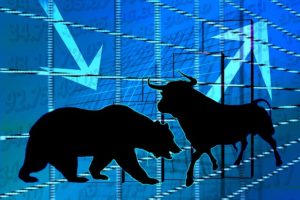If you are looking for an indicator that may signals a market nearing its top, look at the 10-year g-sec yield. This indicator has zoomed to its highest point in the past one year – and is now hovering at around 7.91 levels.
Look at where this indicator was placed about a year ago: at 6.50 percent.
So why is this indicator important?
First, it changes the way how savvy investors evaluate the ‘riskiness’ of stocks. Savvy analysts use this indicator to assess how much additional price to pay for stocks and earnings.
If the risk-free rate of return is indeed decent, most investors tend to choose the less riskier haven of debt.
Second, corporate earnings begins to shrink for some of the big companies that also use debt to do earn the profits. When interest rates rise, corporates have to increase their interest payouts, assuming all other indicators remain equal.
This reduces corporate earnings distributable to equity stockholders. As investors will get lesser returns for their money, they will pay a lower price for equities.
Where is this indicator heading?
In a recent note by Dhananjay Sinha of Emkay Stock Broking has raised the target for the yield from 8.0 to 8.4 percent.
“However, the trajectory of credit demand, tapering global liquidity and normalisation of growth in currency demand to pre-demonetisation trend suggest that liquidity shortfall will continue to harden G-sec yields. Our estimated fair value for 10-year G-sec now stands at 8.4% vs 8.0% earlier,” notes Dhananjay.
If yields do spike back to levels of 8.4 percent or thereabouts, remember that such numbers were seen back in the days of 2013. During that period, corporate earnings slowed down to single digits, which could be said was for other reasons, but interest costs was also surely one of them.
During late 2013, 10-year g-secs climbed ferociously to levels of 9.1 percent in December 2013. You have to note that stock market is forward looking and is always pricing in possibilities that could happen in the coming months.
A charged up interest rate atmosphere usually causes consumers and businesses to cut back on their spending, thereby crimping the economy.




